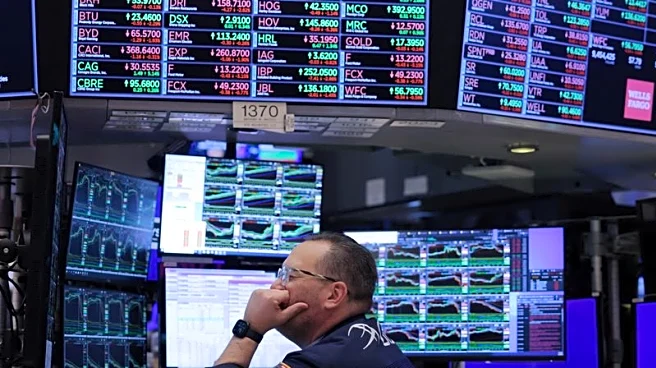What's Happening?
U.S. stock markets are experiencing a rebound following President Trump's decision to soften his stance on tariffs against China. This move comes after a significant selloff last Friday, which marked the largest drop in the S&P 500 since April. The President's willingness to negotiate has led to a 1.1% increase in S&P 500 futures and a 1.6% rise in Nasdaq 100 contracts. Meanwhile, gold prices have reached a new all-time high, nearing $4,080 an ounce. The trading in U.S. Treasury futures has seen a slight decline, with cash trading suspended due to Columbus Day.
Why It's Important?
The easing of tariff threats by President Trump is significant for the U.S. economy and global trade relations. It signals a potential de-escalation in the trade tensions between the U.S. and China, which have been a source of market volatility. The stock market's positive response indicates investor optimism about future negotiations and economic stability. This development could benefit U.S. businesses reliant on international trade and reduce uncertainty in financial markets. However, the ongoing trade discussions will continue to be closely monitored by investors and policymakers.
What's Next?
The next steps involve potential negotiations between the U.S. and China to address trade imbalances and tariff concerns. Stakeholders, including businesses and trade organizations, will be watching for any formal agreements or policy changes that could impact international trade dynamics. The U.S. government may also face pressure from domestic industries affected by tariffs to reach a favorable resolution. The outcome of these negotiations could have long-term implications for global trade policies and economic growth.
Beyond the Headlines
The broader implications of President Trump's softened rhetoric may include shifts in geopolitical alliances and trade strategies. As the U.S. seeks to balance its economic interests with diplomatic relations, the approach to China could influence other international trade agreements. Additionally, the focus on tariffs highlights the complexities of global supply chains and the need for strategic economic planning. The situation underscores the interconnectedness of global economies and the potential ripple effects of policy decisions.













